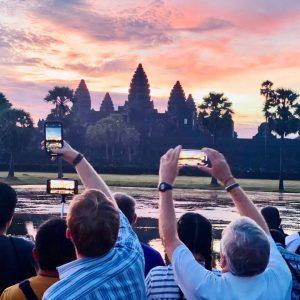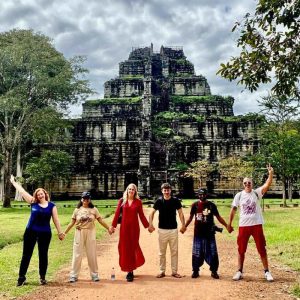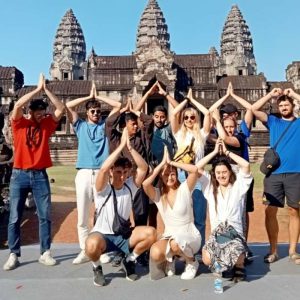- Home
- Tour Details
Angkor Wat: Angkor Sunrise with Bayon and Ta Prohm Temple Tour
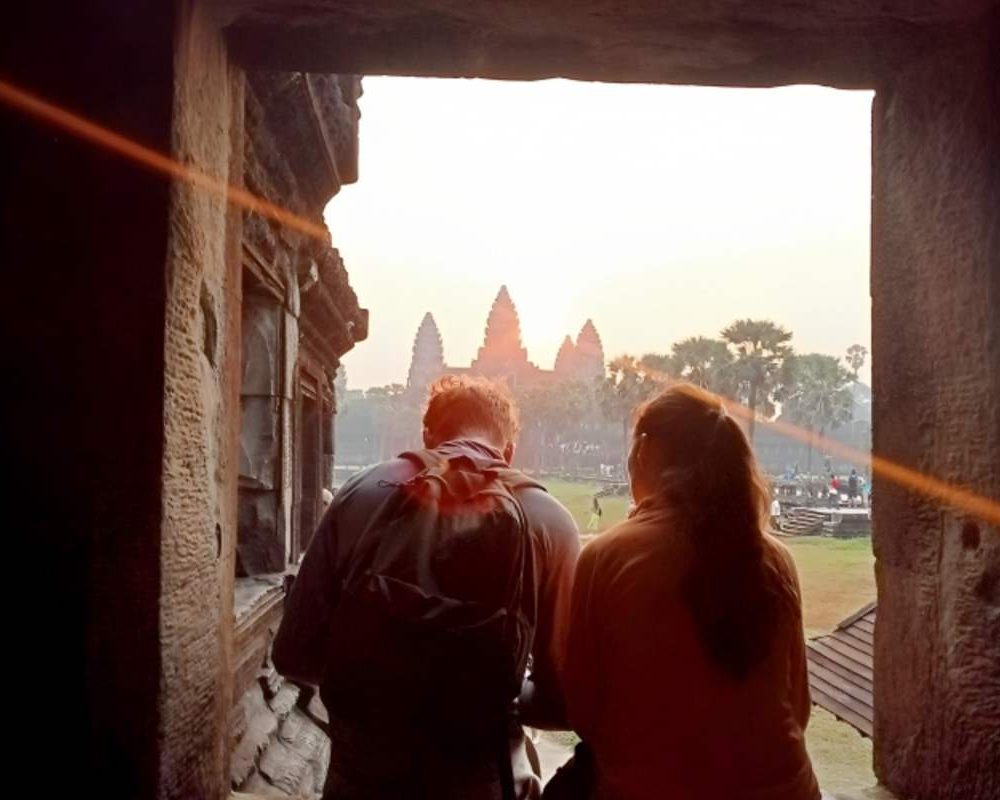
Angkor Wat: Angkor Sunrise with Bayon and Ta Prohm Temple Tour
15$
Images From Travellers
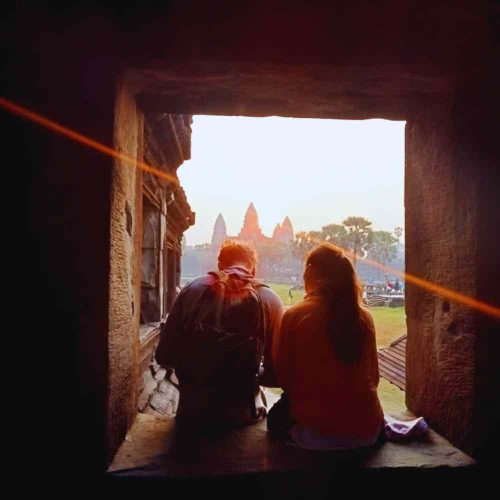
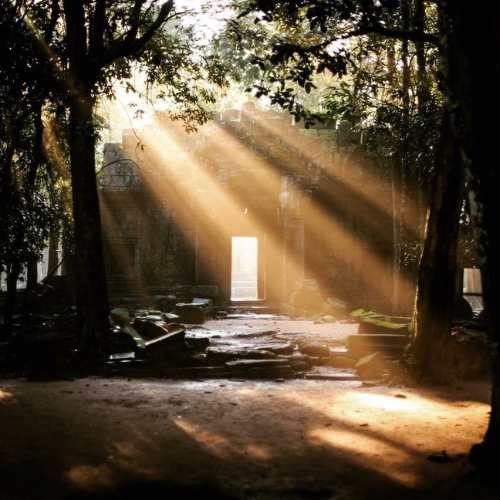
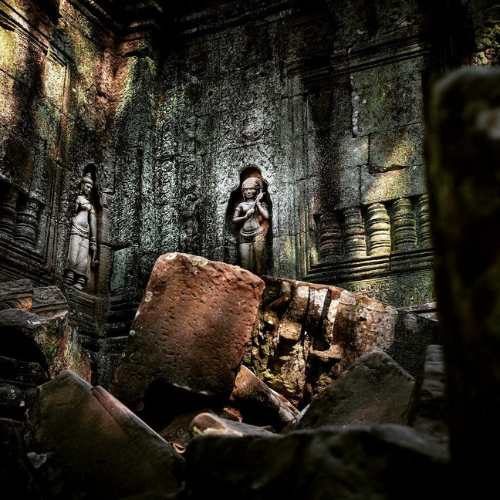
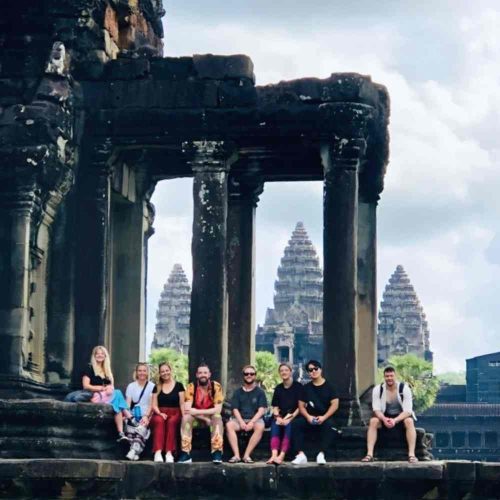
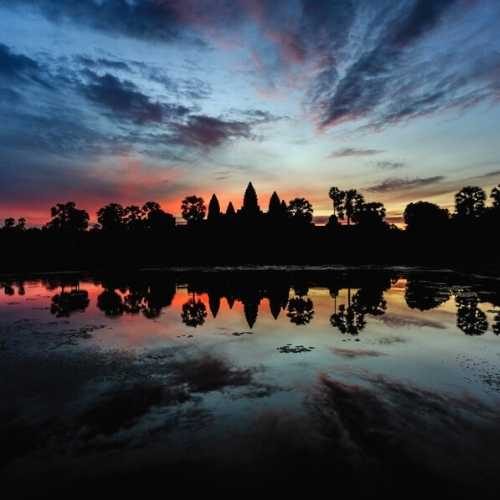
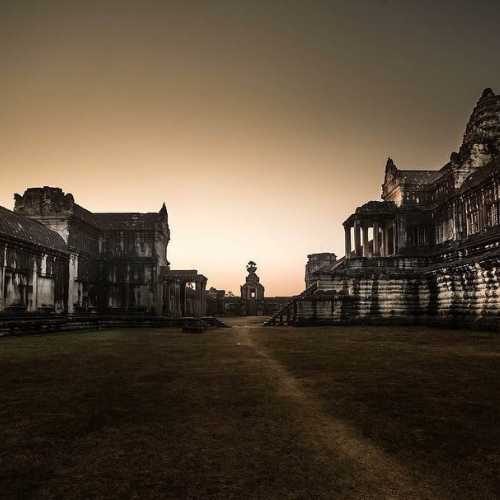
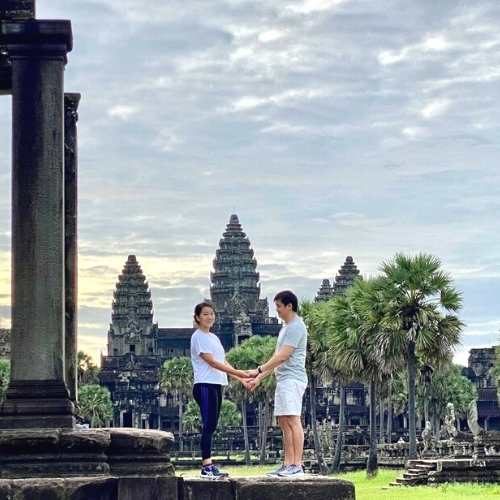
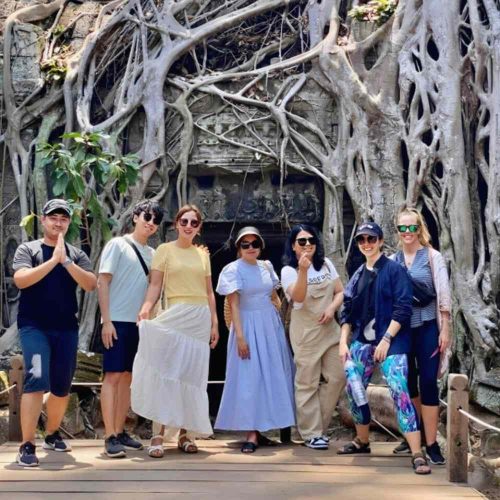
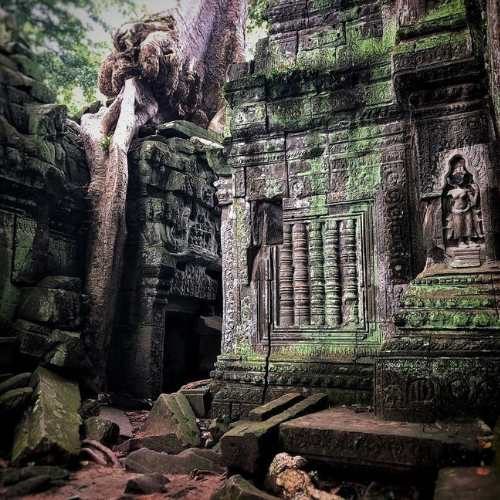
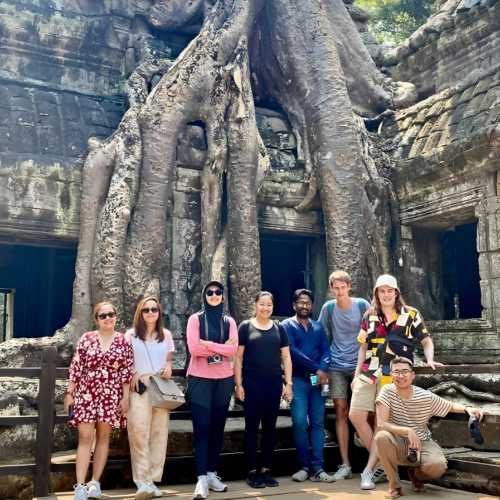
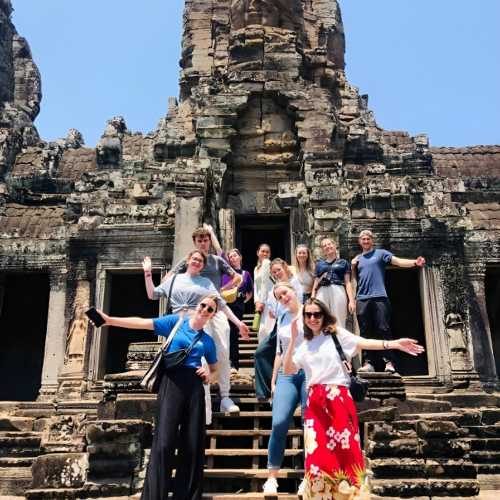
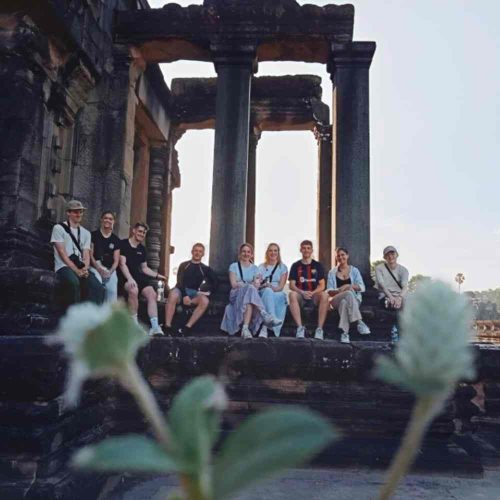
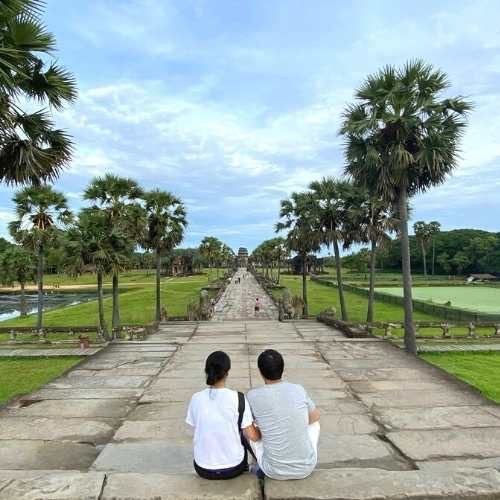
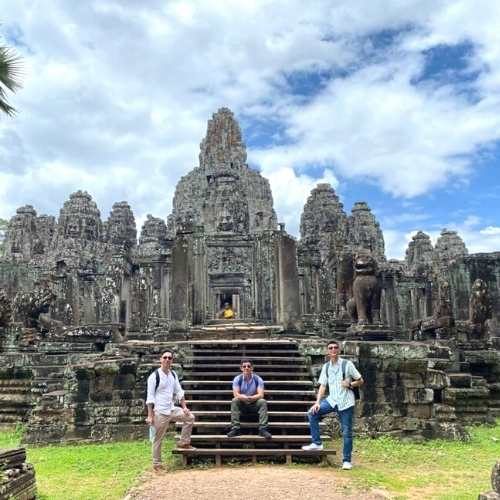
The tour experience
- Hotel Pick Up: 04:20 am
- Tour departs at 5:00 am
- Drop off at 12:30 am
Sunrise at Angkor Wat
Start your adventure at 4:20 am with the breathtaking sunrise at Angkor Wat Temple. Marvel at the world’s largest religious monument, built in the early 12th century, with its intricate carvings and grand architecture.
Breakfast by Srah Srong
Enjoy a delicious breakfast at a local restaurant near the serene Srah Srong, known as the “Royal Bath.”
Bayon Temple
Next, explore Bayon Temple with its 54 towers and over 200 smiling stone faces, representing King Jayavarman VII. This late 12th-century Buddhist masterpiece will leave you in awe.
Ta Prohm Temple
Visit Ta Prohm, the “Tomb Raider Temple,” overgrown by massive tree roots, creating a unique fusion of nature and architecture.
After a day filled with exploration, return to your hotel with unforgettable memories of Cambodia’s ancient wonders.
Duration
8 hours
Max People
12 People
Pick Up
Your hotel
Min Age
12+ Years
Tour Type
Temples Tour
Temples Visited
Angkor Wat (Sunrise) - Bayon - Ta Prohm
Price Includes
- Pick-up & Drop-off at your Hotel - Van/Mini Bus
- Transportation in Luxury minivan
- English Speaking Tour Guide
- Cold Drinking Water & Cold Towels
- Local taxes
Price Excludes
- Temple Pass
- Breakfast
- All gratuities
Angkor Wat Sunrise Tour – Dress Appropriately!
Respect the ancient religious grounds when you visit them. Wear a shirt that can cover your shoulders, and trousers or knee-length pants or skirts are permitted.
Our Signature tours
- Itinerary planning
- Fantastic local guide
- Luxurious minivan
- Small group
- Suitable for solo travelers
- All comforts on board
Location
- Angkor Thom
How do we roll?
Please note that if you wish to book a tour for the same day or the next day, please call us directly at +855 (0)98 55 55 18 to be sure we have available seats for you. Our contact forms are only intended for bookings made at least 24 hours before the start of the tour.
- First, select either a shared tour with a guide or a private tour with or without an optional tour guide.
- Fill in the contact form fields as detailed as possible (if you have missing information such as the hotel/room details, don’t worry, you can email us later at booking@siemreapshuttle.com).
- You will receive a confirmation email within 24 hours. If not, please contact us directly at booking@siemreapshuttle.com.
See our How We Roll page to learn about the general rules of thumb for visiting the temples. We encourage all our guests to follow these rules, as the authorities enforce them, and we cannot make exceptions.
Small group tours!
Small enough to explore each location separately, yet large enough to foster a pleasant social atmosphere! Our group size is never more than ten people.
We maintain this as our typical maximum small group size as it has always been a crucial strong point in all our guests’ reviews. Our guests have consistently praised our ability to accommodate small groups, and we’ve decided this to be our standard maximum group size.
Angkor Wat Sunrise Tour
Is Angkor Wat a sun temple?
- The primary tower of the Angkor Wat temple is oriented in such a way that it faces the rising sun on the vernal equinox and the autumnal equinox.
- Angkor Wat faces west rather than east, in contrast to the majority of other Khmer temples in the region.
Many historians have arrived at the conclusion that as a result of this, Suryavarman intended for it to serve as his funeral temple. The fact that the temple was built in such a manner led them to this conclusion, and it was based on this fact alone.
In the construction of Angkor Wat, what kinds of stones were used?
The construction of Angkor Wat was carried out primarily with the use of sandstone and laterite as its principal building materials (a clayey soil and rock material rich in iron and aluminum).
Sandstone was the principal building material that was used in the construction of the elements of the temple that were visible to visitors. The construction of the majority of the hidden structures involved the use of laterite.
Local guides!
Follow in the footsteps of our tour guide. These are the local experts who call your spectacular tour site “home.” Be ready to get insides on local treasures, local legends, personalities, and historical details! Be ready to get and learn what every other traveler is missing when they are just trying to search and scroll the web.
Why is Angkor Wat so famous?
Nestled within the province of Siem Reap in Cambodia lies the vast Angkor Archaeological Park, a crown jewel of the country’s tourist hotspots. Hidden within the dense rainforest undergrowth, you’ll discover the towering remnants of an ancient stone city, echoing tales of a bygone era.
Cambodia boasts a rich assortment of temples and structures, yet the one that consistently captures the most fascination is the monumental Angkor Wat. Its prominence is such that it graces the country’s national flag – a testament to its cultural and historical significance.
Built in the 12th century, this majestic “temple-mountain” was originally designed to serve as the dwelling place for the Hindu deity, Vishnu. Its architectural grandeur and historical relevance make it a must-visit destination for any traveler exploring Cambodia.
The bas-relief galleries on many of the walls of one of the most spectacular temples in Cambodia depict themes from Cambodian mythology and culture that extend back hundreds of years. These depictions date back to when the temple was built.
- This area of the ancient city is home to some of the most interesting and distinctive structures in the entire city.
When you realize that Angkor was constructed in the 12th century, it is even more astonishing that it is still regarded as one of the world’s most spectacular architectural wonders. Even with the highly developed technologies that are currently at the disposal of contemporary architects, it is difficult to see them constructing anything quite as beautiful as Angkor Wat.
This structure is filled with a variety of architectural details, some of which include intricate carvings, bas reliefs, corridors, towers, baths, libraries, and moats. And the quality of each of them has, for the most part, remained the same during the period of their existence.
- It served as the seat of government for the Khmer Empire for a sizeable chunk of that empire’s existence.
The Khmer Empire left a significant architectural legacy behind for future generations, the most notable example of which is Angkor Wat. Large portions of Southeast Asia were governed by a monarchy influenced by Buddhism and Hinduism beginning in the year 802 A.D. and continuing until the collapse of Angkor Wat in the 15th century.
This reign lasted until Angkor Wat was destroyed. According to the findings of archaeological digs, the ancient city of Angkor was one of the most populous cities in the world prior to the advent of industrialization (during the 11th and 12th centuries).
This event took place at the height of Angkor’s prosperity when it was at its most prosperous. Angkor Wat served as the capital of the Khmer Empire from the year 802 to the year 1295.
- When it was first found, UNESCO immediately declared it to be a World Heritage Site and has kept that designation ever since.
In the year 1992, Angkor Archaeological Park was recognized by UNESCO as a deserving candidate for the prestigious designation of World Heritage Site.
Because this area is home to some of the most amazing works of art and architecture from the ancient world, the Khmer Empire, also known as the Angkor Empire, decided to place its capitals here. The Khmer Empire is also known as the Angkor Empire.
Unique Private Luxury Van!
A private driver at your tour disposal, air conditioned luxury vans with leather seats, you won’t be losing any moment waiting for your driver!

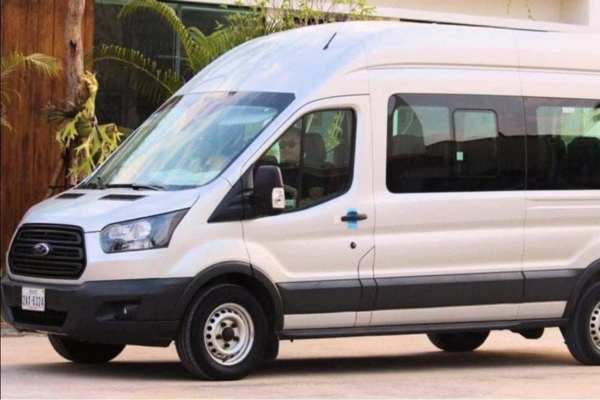
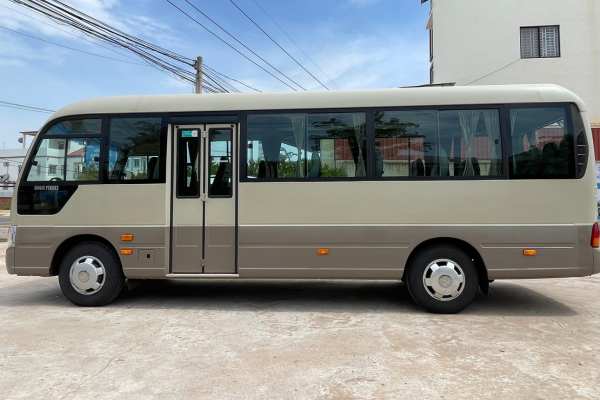
How deep is the moat around Angkor Wat?
The moat surrounding Angkor Wat would have helped stabilize the temple’s foundation, preventing groundwater from rising too high or falling too low. The moat is 13 feet deep and is 650-foot-wide, encompassing a perimeter of more than 3 miles. The moat separates the sacred temple grounds from the protective moat that surrounds the entire complex.
Perfect for Solo explorers!
Because of our extensive expertise and the feedback we receive from our clients, we always organize trips in the form of small groups to facilitate interactions between people who share similar travel interests and individuals who are venturing out on their own.
Get 20% Discount Now
Book your tour to Siem Reap and Angkor Wat at least 60 days in advance and we will immediately apply 20% discount on your entire selection.
Related products
-
Multi-Day Small Group Tours
3-Day Angkor Wat Sunrise, Banteay Srei and Floating Villages Tour – Small Group Tours
From: 50$ Read moreRated 0 out of 5 -
Angkor Wat Tours
Explore Angkor with Bayon Temple and the world-famous Ta Prohm (Tomb Raider) Temple
20$ Add to cartRated 0 out of 5

